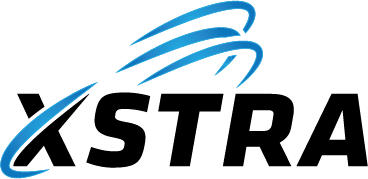Why XACCESS is Different
Unlike other MFA solutions that operate only at the application level, XACCESS is the only multi-factor authentication product that:
- Integrates with client environments at both the System and Network layers; and
- Protects against Brute-Force attacks on User passwords
System-Level Protections
At the system layer, XACCESS directly modifies user account attributes based on authentication success or failure. Automated actions can be applied that align with client-specific security policies, ensuring that access rights adapt in real time. XACCESS integrates seamlessly with LDAP, Active Directory, and RADIUS, as well as any custom directory system.
Network-Level Protections
At the network layer, XACCESS is the only MFA solution that works natively with all major router brands, including Cisco and MikroTik. It applies just-in-time, self-expiring, stateful firewall and routing rules, tied to the authenticated user’s role and trust level. This ensures precise, real-time control of access to corporate information and resources.
By working across multiple OSI layers, XACCESS ensures that both system accounts and network resources are protected holistically, maximizing corporate security and safeguarding user identity.
MFA Comparison: System & Network Protections
| Product | Pro-Active Network Level Protection | Custom System Level Protections |
|---|---|---|
| XACCESS | ||
| Cisco Duo | ||
| Okta Adaptive MFA | ||
| Microsoft Entra ID (Azure AD MFA) | ||
| Ping Identity | ||
| AuthX | ||
| LastPass MFA | ||
| JumpCloud | ||
| YubiKey | ||
| RSA SecurID | ||
| Silverfort |
100% Protection Against Password Brute-Force Attacks
Password reuse remains a critical and widespread security vulnerability:
- 60% of users reuse the same password across multiple accounts,
- 94% of leaked credentials are reused, and only
- 6% are unique.
This makes even one compromised account a gateway to many others. Most MFA solutions – including:
Okta, Microsoft Entra ID, Duo, Ping, LastPass MFA, JumpCloud, YubiKey, RSA SecurID, Silverfort, and AuthX – still require the user to enter their username and password before prompting for a secondary factor, which leaves passwords exposed to brute-force or credential stuffing attacks. XACCESS dramatically shifts this paradigm: by requesting the MFA token before any password is entered, it prevents attackers from ever targeting or intercepting the password. While no system is infallible, this architecture significantly strengthens password protection and dramatically minimizes attack surface.
Comparison Table: Token Prompt Position
| MFA Product | Token Prompt Position | Protects User Passwords | Notes |
|---|---|---|---|
| XACCESS | Before username/password | Unique flow – token first, prevents brute-force of passwords | |
| Cisco Duo | After username/password | Standard flow. Can combine password+token in some RADIUS scenarios, but password always submitted first. | |
| Okta Adaptive MFA | After username/password | Supports chained authentication methods; password always comes before MFA factor. | |
| Microsoft Entra ID (Azure AD MFA) | After username/password | Standard: password → MFA (push, OTP, biometrics). | |
| Ping Identity | After username/password | Username/password collected before MFA challenge. | |
| AuthX | After username/password | Credentials first, MFA second. | |
| LastPass MFA | After username/password | Standard second factor – OTP, push, or biometric after password. | |
| JumpCloud | After username/password | Requires primary credentials before MFA prompt. | |
| YubiKey | After username/password | Hardware token used as second factor after password step. | |
| RSA SecurID | After username/password | Traditionally used as a second factor after primary credentials. | |
| Silverfort | After username/password | Adaptive MFA – integrates with legacy apps, but flow still credentials first. |
Sources: Cisco, Cisco Community, Okta Docs, industry MFA guides (2025).
References
Password Reuse & MFA Effectiveness
- Google / Harris Poll (Feb 2019) – Online Security Survey (Password reuse stats)
- Google Cloud – Password leak detection & reuse figures (recap of Google/Harris Poll)
- Microsoft Security Blog – MFA blocks 99.9% of account attacks
- Microsoft TechCommunity – Compromise rate <0.1% with MFA
MFA Flow (Password then Factor) – Vendor Documentation
- Duo – Guide to Duo Authentication (user login experience)
- Cisco Community – ISE Device Admin with Duo MFA (primary password + Duo passcode flow)
- Cisco Community – TACACS+ with Duo MFA (password, then Duo)
- Okta – Multifactor Authentication (Classic Engine overview)
- Okta Identity Engine – Authentication method chain (factor order configuration)
- Okta Support – Accept password and security token in the same RADIUS request
- Ping Identity – Authentication flows (first-factor precedes MFA)
- LastPass – Supported MFA options (2nd factor after login)
- Microsoft Entra ID – Authentication flows (interactive sign-in & MFA prompts)
Need more help with this?
© 2021–2025 XSTRA Group Pty Ltd (Australia). All rights reserved.


